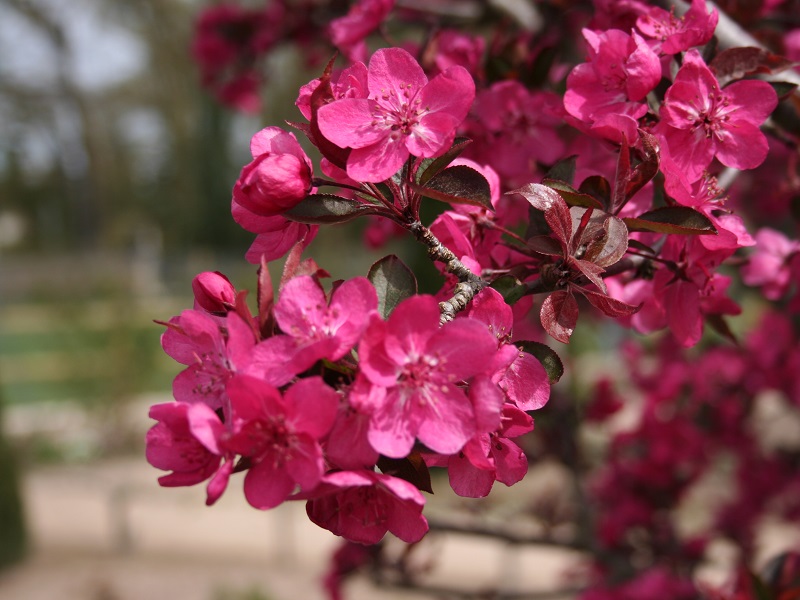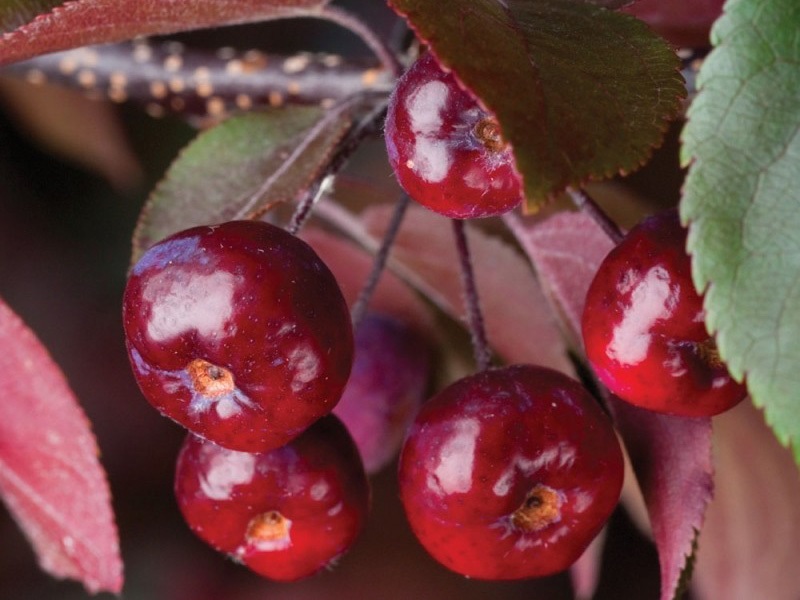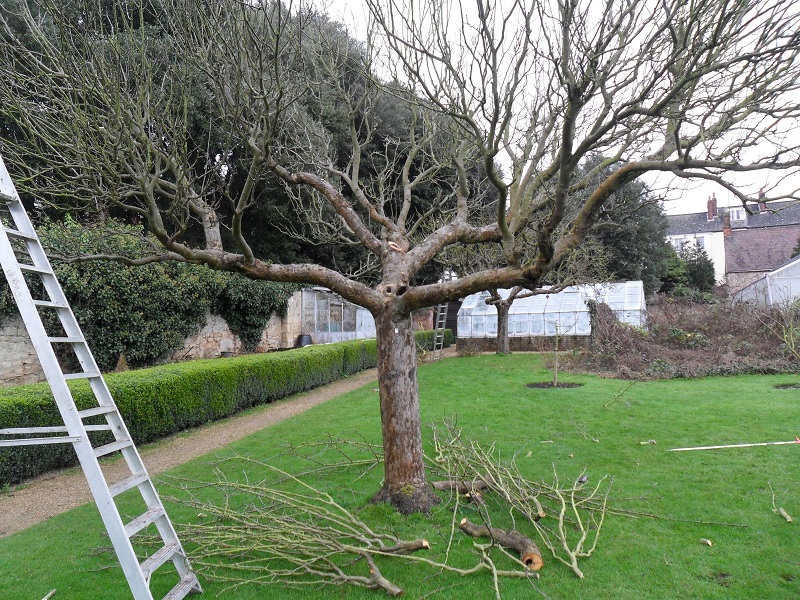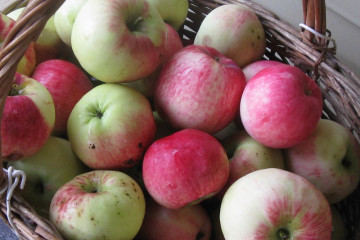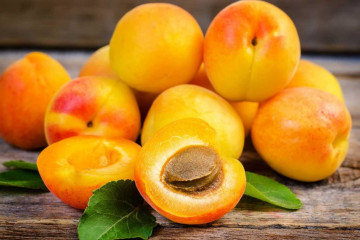Apple royalty decorative: description, planting and care
Content:
Most often, it is the ornamental apple trees that become family trees, under which all relatives gather for tea. Such plants are able to decorate any area, fill it with a fragrance, moreover, they do not need strict adherence to all care requirements. The hybrid apple royalty is a unique purple crop that is used exclusively for decorative purposes to create creative garden compositions and landscape designs. To ennoble your personal plot with such a wondrous tree, you must first study the features of its cultivation.
The history of the creation of the variety
The Royalty apple tree was bred by Russian breeders as an ornamental tree to improve landscape design and create unique compositions for the garden. To obtain the variety, the genetic material of the Nedzvetsky apple tree was used.
The plant is not officially registered in the State Register of the country, but, despite this, it continues to decorate garden plots more and more often.
Description of the variety
The decorative Royalty apple tree, the description of which has attracted the attention of not only gardeners, but also landscape designers, has many remarkable characteristics. They need to be known to everyone who wants to grow such a plant in their personal plot.
Dimensions of the tree
The ornamental red-leaved royalty apple tree has a slow growth rate. The tree reaches an average height of 4-6 m at the age of 10 years.
Crown width
For the first few years, the crown grows weakly, which makes the tree look more compact. There are two varieties of the Royal apple tree, depending on the width of the crown:
- Vertical. At first, the miniature tree grows rapidly. An adult plant has a wide spreading crown with a diameter of 4-5 m, oval or spherical in shape.
- Weeping. The growth of the branches is directed downward, so the plant is able to acquire an attractive shape without human intervention. By cropping, you can make minor adjustments.
Leaf shape and size
The leaves are characterized by a glossy surface on top and a rough bottom, an oblong elliptical shape, narrowed towards the end. The length of the leaf plate is not more than 10 cm. In the spring, the foliage is painted in a bright purple color, during the summer it acquires a red tone, which changes to a crimson hue in the fall.
The leaves do not crumble for a long time, so the plant pleases the whole season with its brightness and especially stands out against the background of a gray autumn garden.
Annual growth
For the first 3 years, the Royalty apple tree builds up its root mass, and after that it goes into the development stage of the ground part. Annual growth is a maximum of 40 cm, depending on growing conditions.
Flowering and fruiting
In early May, buds begin to bloom. Flowering lasts 4-14 days. Inflorescences begin to form asynchronously, so sometimes large buds and small delicate flowers can be seen on the apple tree at the same time.
Fruits begin to form immediately after the petals fall.Harvesting is long: from late August to early October.
Fruit taste
The fruits taste quite bitter and tart, and when consumed even in small quantities, they provoke an eating disorder. For a long time they were considered inedible and were cultivated only as interior decoration. Now they are actively used in the culinary industry, only in small quantities and after heat treatment. The unusual taste of apples modernizes the dish, adding interesting notes.
Disease and pest resistance
Pests on the apple tree rarely appear, but there were cases of seizure of the territory by aphids, fruit mites, scabbard and apple sucker. The plant is poorly resistant to fungal diseases: scab and powdery mildew. Burns may also appear on foliage due to bacterial infections.
Advantages and disadvantages
The main advantages of the ornamental royal apple tree:
- unpretentious care;
- undemanding to the soil composition;
- high resistance to severe frosts and winds, prolonged droughts;
- decorative qualities of a tree;
- good survival rate of a seedling in any climatic region.
Disadvantages of a fruit crop:
- low rate of development;
- unsuitability of fruits for consumption in raw form;
- in some cases, a poor response to pruning in the form of stunted growth.
Selecting and preparing a landing site
When choosing a place for planting the Royal apple tree, you need to take into account the following requirements for the site:
- well-lit area, since the decorative features of the foliage will depend on exposure to sunlight;
- groundwater should be no closer than 2 meters;
- fertile soil should be breathable and neutral in acidity;
- the presence of crushed stone, limestone is not encouraged in the soil.
Features of planting and care
Before planting, you need to prepare the plant in advance:
- gently straighten the roots;
- if necessary, get rid of broken branches during the transportation of the seedling;
- place the root system in water for 2 hours.
Instructions for planting a Royal apple tree:
- Dig a hole 60-70 cm deep, 80-90 cm in diameter. Put 10-15 cm of a drainage layer in the form of crushed bricks or gravel on the bottom, fill in fertile soil mixed with fertilizers, pour 2-3 liters of water.
- Drive a metal or wooden peg into the hole from the north side of the future location of the seedling.
- Place the tree in the groove so that the root collar remains about 5-7 cm above the soil level.
- Straighten the roots neatly, sprinkle with earth and tamp.
- Pour 20-30 liters of water and cover the trunk circle with compost.
Valuable Care Tips:
- Loosening. Throughout the growing season, it is necessary to remove weeds that take nutrients from the crop, and loosen the soil to enrich it with oxygen.
- Watering. The variety does not like excessive moisture, therefore, it is possible to additionally moisten the soil 4-6 times throughout the season, provided that the weather is dry and hot. There is no clear watering schedule; it should be done only when necessary.
- Soil care. Some time after planting, you can see that the soil near the trunk is sinking. This can lead to stagnation of moisture during watering and the beginning of the putrefactive process. To level the surface and avoid negative consequences, you need to periodically add earth.
For abundant flowering and a rich shade of leaves, you need to make an effort when caring for the crop.
Pruning and shaping the crown
Pruning ornamental plants is an individual whim of the owners, since the emphasis is not on increasing the yield, but on the external attractiveness of the plant. The tree lends itself well to shaping, so you can give it any shape.
Top dressing
Top dressing should be carried out according to the standard scheme:
| Period | A drug |
| Before flowering | Solutions of ammonium nitrate (20 g per 10 l), potassium sulfate (5 g per 5 l) and ammonium sulfate (15 g per 5 l) |
| During flowering | Chicken droppings or manure (5 kg per 1 bucket of water), potassium sulfate solution (6 g per 1 l) |
| After flowering | A mixture of nitrophoska (50 g) and sodium humate (1 g) per 10 l of water, under 1 tree 2 buckets of substance, urea solution (50 g per 1 l) |
It is necessary to carry out exclusively root dressing, adding nutrients to the soil while loosening the trunk circle.
Preparing for winter
The plant is resistant to cold weather, but when grown in the northern regions, it is necessary to wrap the trunk with agrofibre or burlap, cover the root zone with straw and dry grass.
Prevention and control of diseases and pests
To avoid damage to the crop, you need to carry out regular preventive measures in the form of spraying with fungicides and insecticides in the spring, before the first buds bloom. The procedure should be repeated if symptoms of disease or pest infestations appear. If the use of the fruit is not envisaged for culinary purposes, processing can be carried out during any growing season.
The Royalty apple tree is a unique ornamental plant that landscape designers often use in their most ingenious designs. The tree is unpretentious and undemanding to climatic conditions. Therefore, every gardener can plant it on his own plot for spiritual pleasure, pleasant relaxation in the shade of a red apple tree.
